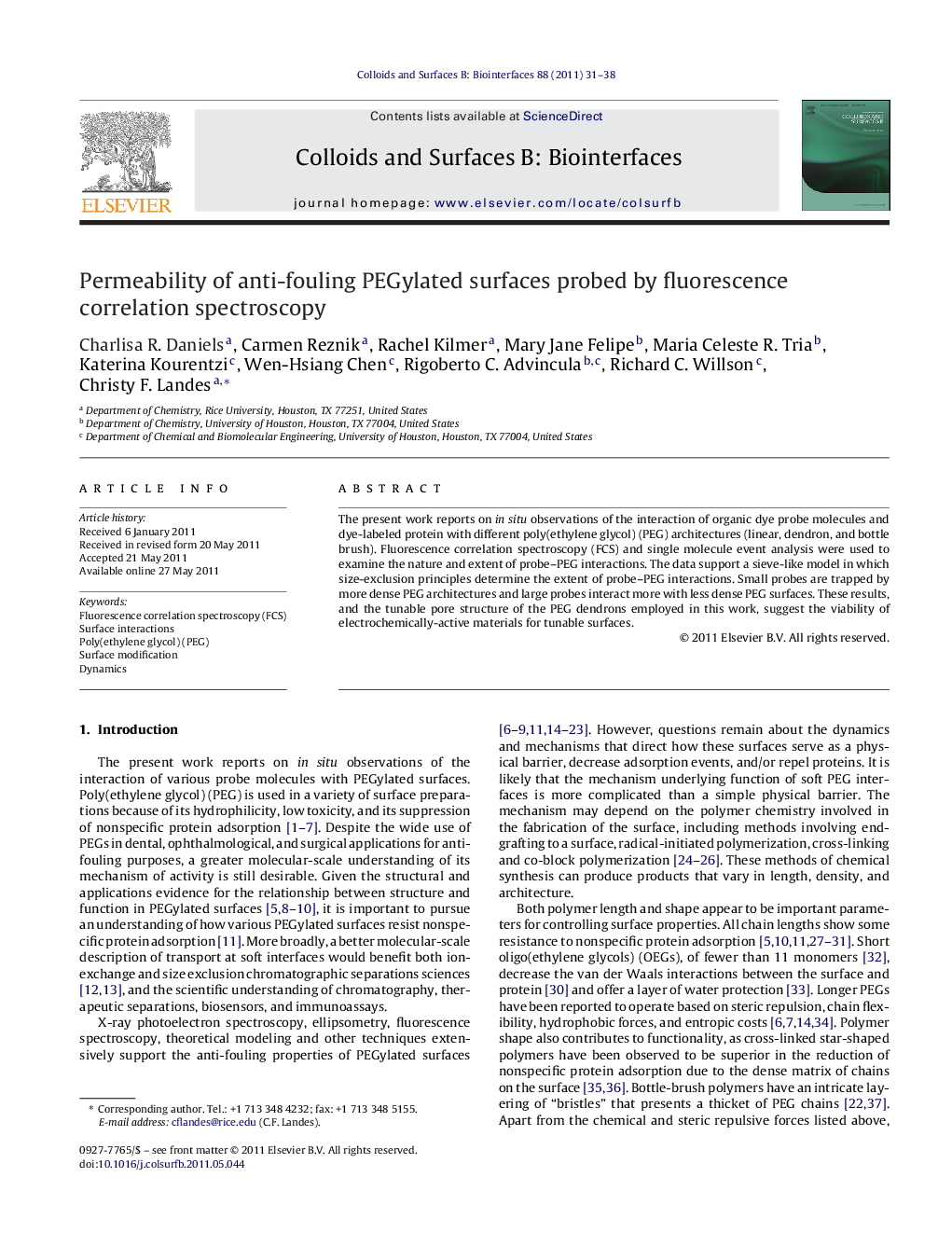| Article ID | Journal | Published Year | Pages | File Type |
|---|---|---|---|---|
| 601019 | Colloids and Surfaces B: Biointerfaces | 2011 | 8 Pages |
The present work reports on in situ observations of the interaction of organic dye probe molecules and dye-labeled protein with different poly(ethylene glycol) (PEG) architectures (linear, dendron, and bottle brush). Fluorescence correlation spectroscopy (FCS) and single molecule event analysis were used to examine the nature and extent of probe–PEG interactions. The data support a sieve-like model in which size-exclusion principles determine the extent of probe–PEG interactions. Small probes are trapped by more dense PEG architectures and large probes interact more with less dense PEG surfaces. These results, and the tunable pore structure of the PEG dendrons employed in this work, suggest the viability of electrochemically-active materials for tunable surfaces.
Graphical abstractFigure optionsDownload full-size imageDownload as PowerPoint slideHighlights► Interactions of organic dye and dye-labeled protein with several PEG architectures. ► Linear, dendron, and bottle brush architectures studied. ► Sieve-like behavior of PEGs involving size-exclusion principles. ► Small probes trapped by dense PEG; large probes interact with sparse PEG. ► Dendrons allow variable PEG density, optimal for fabrication of tunable surfaces.
